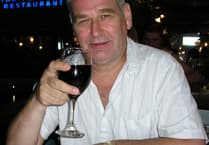TODAY we welcome back an old friend.
Dave Kent used to write the popular FOREST VIEW column which first appeared in 1996.
For those of you who don’t remember Dave he first moved to the Forest in 1973 to St Briavels, moving to Parkend after 10 years in the South Pacific, then to Newnham, where he now lives.
He had a career in IT for 35 years working in education and for police systems.
He played football, rugby and cricket for various teams around the Forest, and has been actor and director for dramatic groups in Monmouth, Ross-on-Wye, Newnham and Parkend.
His wife Ann worked for the Citizen for many years as the local news co-ordinator.
Dave writes...
Welcome to Forest View, which revives my column in the Citizen many years ago, representing my weekly outlook on this adopted corner of the country.
The transition from foreigner to forester (work in progress) is still not quite complete, so I don’t yet aspire to call myself a forester, but I think that I have moved along in gradual stages and the Forest is where I say I’m from when away and is my adopted and permanent home.
I’m celebrating 50 years since I first moved to the forest, which was inspired by a random visit a year earlier.
The Forest of Dean scarcely impinged on my consciousness when I was at school, except as an area to colour in black on maps in geography, to signify a coal mining area (it was a long time ago). Gloucester was a remote city in the far southwest, and Bristol, Bath, Hereford and Worcester were places of no particular relevance or interest to me.
As a student in London in the 1960s, I got to know the other side of the Severn, around Almondsbury, through college friends from that area, as I frequently stayed with a college friend at Olveston. One day we made a random visit to the Forest, stopping at the Ferry Inn at Beachley (since sadly closed), which was almost directly underneath the new (but now the old) Severn Bridge with its wonderful views of the Severn estuary from the beer garden by the river.
We drove through the narrow, high-hedged lanes of Woolaston Common and Brockweir, observing the contrast between narrow wooded Wye valley and the wide tidal Severn.
I was especially captivated by the charm of St Briavels, which I thought of then, and still do, as the perfect ancient English village. We drank real ale and watched morris dancers outside the George pub, in the village centre which includes the castle and moat, the church and the tump overlooking the glorious Wye valley below.
It might seem a sentimental metropolitan view of a rural idyll, but this view from the tumps was an image of England which I remembered during ten years of exile abroad. It was thrilling then, and still is, as it was when I saw it first so many years ago.
Om my return to the real world of metropolitan business, which involved either driving around the intimidating Marble Arch traffic intersection or hanging onto a strap feeling a mixture of boredom and claustrophobia and discomfort for half an hour or so twice a day (no working from home in those days), I gradually realised that it doesn’t have to be like this.
It puts a 10-minute wait at a temporary traffic lights on the A48 on a visit to Gloucester into perspective.
The following year, in a moment of inspired recklessness, I accidentally bought my first house in the forest, which will need some further explanation, as I started on my journey as a new Forester in St Briavels Coach House.





Comments
This article has no comments yet. Be the first to leave a comment.